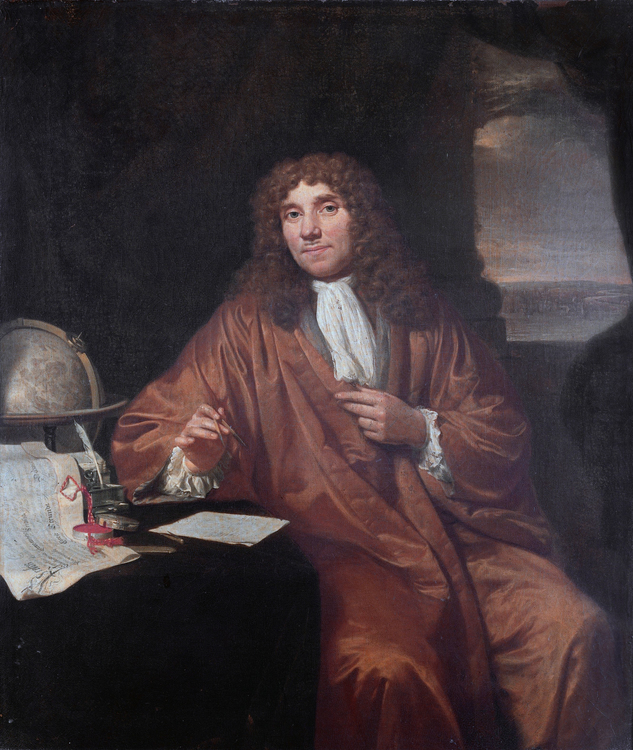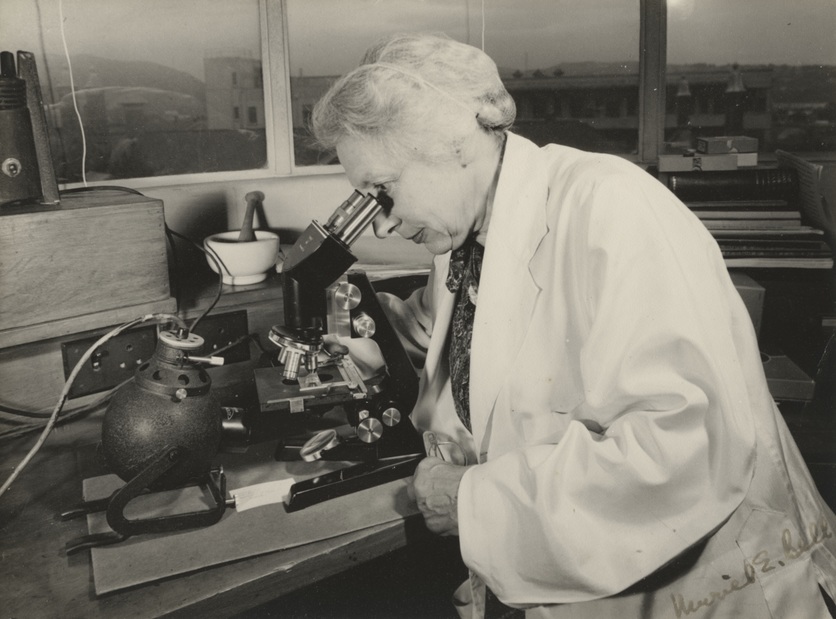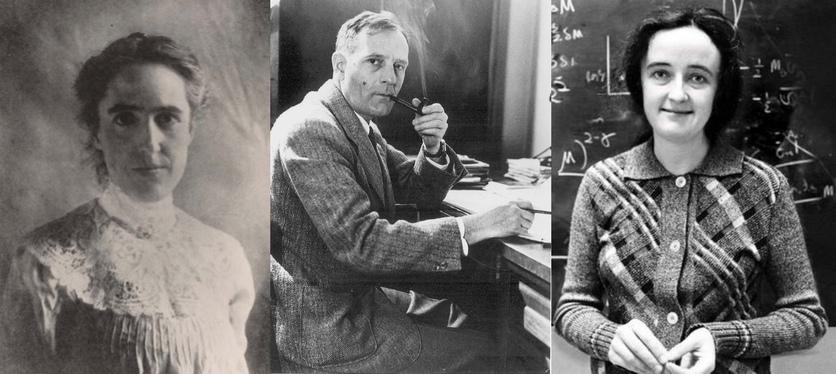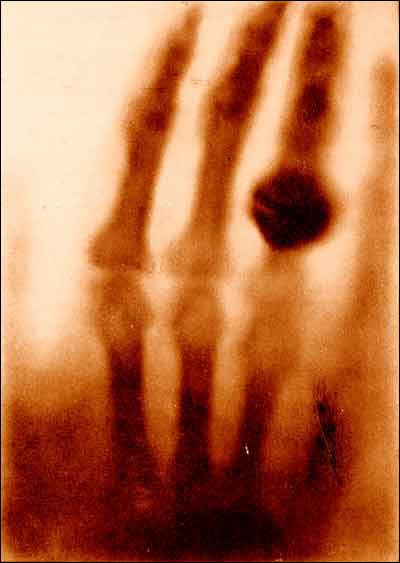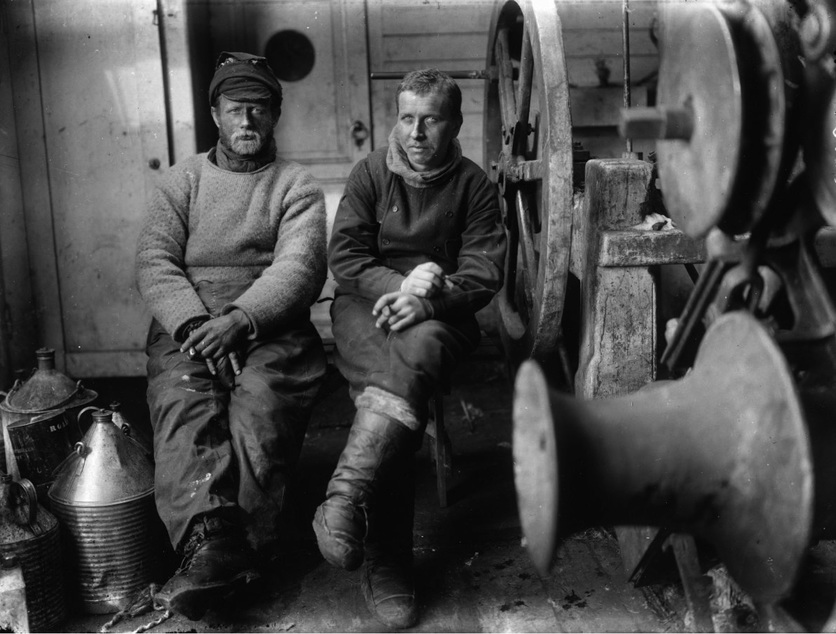Why is the sky blue? Why do stars twinkle? Why did the apple fall to the ground? What happens if I hit this rock with another rock?
As humans, we’re curious, and throughout history, we’ve pondered the big and small questions. This curiosity and desire to understand the world helped form the origins of modern science.
Tying in stories of science in history and scientific breakthroughs can offer engaging opportunities for further exploration and learning. For example, where would computer technology be today without the development of the silicon chip in 1959 and then advanced ceramic versions of it? How long would it have taken humans to learn more about disease if Antonie van Leeuwenhoek hadn’t scraped some gunk off his teeth to examine under a microscope? Microscopy developments have accelerated learning around microorganisms, cells and inorganic materials, enabling great advances in fields from human health and medicine to materials science and space travel.
Standing on the shoulders of giants
Scientists today build on the knowledge and discoveries made by others. It might be that they continue and grow the work of the scientists who have mentored and supervised them or that they build on prior discoveries – both recent and historical.
Otago University geneticist Associate Professor Julia Horsfield points out that, without genome sequencing or the discovery of the structure of DNA and the principles of sequencing DNA, her work investigating how chromosome structure and development affects the function of genes involved in cancer would not be possible.
So next time you see a headline about a breakthrough medicine, remember that it’s not a single event or discovery but a series of developments that have led to the new breakthrough.
This is what Sir Isaac Newton seemed to refer to in a 1676 letter to fellow scientist (and rival) Robert Hooke.
If I have seen further, it is by standing upon the shoulders of giants.
Sir Isaac Newton
Timelines
Timelines exploring the development of scientific ideas over time provide many opportunities for teaching and learning. They provide a useful overview of a topic, a way to explore the development of a scientific idea or new technology and insights into the relationships between scientific and technological developments, and they highlight the importance of some of science’s ‘big ideas’.
Students might like to combine two or more timelines to understand the way developments in different fields might interact. For example, the microscopy timeline details developments in microscopes and telescopes, which have played an important role in planet hunting and the discovery of extrasolar planets. The discoveries and ideas within these timelines feed into the discoveries around natural satellites and orbits, which in turn relate to the timeline of rocket technology. Our Solar System – revolutionary ideas is a resource that traces the major shift from an Earth-centred view of the Universe to a Sun-centred one – starting with Ptolemy in the second century CE.
These are some timelines to explore on the Hub:
- 1080 and pest control – the history and science of mammalian pest control in New Zealand.
- Advanced ceramics – the history of ceramics and the advancements in engineering and medical frontiers made using ceramics.
- Age of the Earth – a look at some of the historical aspects in finding out the age of the Earth.
- The history of antibiotics and antimicrobial resistance – this article and associated interactive timeline cover the development and discoveries of antimicrobials and antibiotics and then the subsequent development of antimicrobial resistance (AMR).
- Bone marrow transplants – from the first ever attempt to treat patients with a donor’s bone marrow to today.
- Brief history of rockets – some of the historical aspects of rockets.
- Development of the periodic table – the development of a classification system for elements.
- Early discoveries about titanium – titanium is light, strong and resistant to corrosion and is the metal of the future. Explore its past in this timeline.
- Earthquakes – find out how our understanding of what causes earthquakes has changed.
- Enviro-imprints – some of the impacts humans have made on our environment in New Zealand.
- Farming and the environment – key dates relating to discoveries about farming and the environment in New Zealand.
- Ferns – some of the historical and cultural aspects of ferns in New Zealand.
- Fighting infection – some of the historical aspects of fighting infection, covering early discoveries on germs and vaccination.
- Fire – events and disasters relating to fire and how humans have learned to manage this chemical reaction.
- Fisheries in New Zealand – a look at some of the historical aspects of fisheries in New Zealand.
- History of limestone uses – traces the history of this sedimentary rock from Egyptian pyramid building to modern-day industries.
- Light ideas and technology – key advances in ideas about light, how we see and how we perceive the world around us.
- Measuring the weather – interactive timeline of the developments in technology related to weather monitoring, measuring and forecasting. It also shows how scientific thinking changed over the centuries as modern science developed, and how society has influenced scientific thinking.
- Medical imaging – major developments in medical imaging.
- Microscopy – key advances in microscopy through history.
- Our changing ecosystems – a look at some of the historical changes in New Zealand’s unique ecosystems.
- Planet hunting – a history of extrasolar planet discovery and the methods and technology to find them.
- Poisons – key dates relating to early discoveries about poisons and toxins.
- Progression of flight – a flight history through kites to a solar-powered plane.
- Satellites – a history of satellites.
- Saving reptiles and amphibians – take a look at historical aspects of saving these creatures, the impacts on them by humans and our conversation efforts.
- Stem cell research – a history of stem cell research.
- Underwater acoustics – key dates relating to important developments in underwater acoustics.
- Vitamin C history – the history of scurvy, the discovery of a cure for the disease and the isolation and identification of ascorbic acid known also as vitamin C.
- Volcanoes – a look at some of the historical aspects of volcanoes in New Zealand.
- Xenotransplantation – some of the key events from the early 1900s until 2017.
Heritage scientists
The heritage scientist timelines track the work of New Zealand-based scientists who have made a significant contribution within their field of research. In many cases, the work has contributed to a paradigm shift – a fundamental change in approach or underlying assumptions – within their field.
Learn more about some of our heritage scientists:
- Muriel Bell (1898–1974) was a medical researcher and nutritionist who used her scientific research to improve the health of New Zealanders through good nutrition.
- Athol Rafter (1913–1996) pioneered the technique of radiocarbon dating in New Zealand and began the long-term measurement of 14CO2 in the atmosphere.
- Thomas William Walker (1916–2010) was a leading soil scientist.
- Frank Foster Evison (1922–2005) was a pioneer in the field of earthquake prediction.
- Joan Wiffen (1922–2009) was the first to discover dinosaur fossils in New Zealand.
- Alan MacDiarmid (1927–2007) was a chemist who, along with two others, discovered and developed a technique to turn certain plastics into conducting materials.
- Beatrice Hill Tinsley (1941–1981) was a cosmologist whose research added to the acceptance of the Big Bang theory.
The Connected article Betty Batham: biologist is a graphic biography about Betty Batham – a pioneering female scientist and the founder of the New Zealand Marine Studies Centre in Otago.
We also have profiles on some other outstanding scientists:
- Florence Nightingale was a social reformer and statistician and is regarded as the founder of modern nursing.
- Dr Daniel Solander was a talented pupil of Swedish botanist Carl Linnaeus and along with Sir Joseph Banks, they were part of James Cook’s first voyage to the South Pacific. This was the first scientific study of New Zealand’s natural history, during which they collected over 360 new plant species from New Zealand.
- Dr Wilhelm Roentgen discovered X-rays and was awarded the first Nobel prize for Physics in 1901.
- Lord Ernest Rutherford recognised as the ‘father of the nuclear physics’, responsible for a number of major discoveries in the fields of radioactivity and nuclear physics and for also changing the basic understanding of atomic science. Awarded the 1908 Nobel Prize in Chemistry.
- Dr Paul Lauterbur and Peter Mansfield were awarded the 2003 Nobel prize in Medicine for their work in developing MRI.
Other Hub articles describe the work of scientists who have changed underlying assumptions in their fields:
- Charles Darwin (1809–1882) was an English naturalist, geologist and biologist whose theory of natural selection changed scientific understanding of evolution. It also challenged thinking of the day that subscribed human existence to a supreme creator and changed how people look at science.
- Gregor Mendel (1822–1884), known as the father of genetics, developed principles of inheritance that proposed how inherited traits are passed between generations.
- Alfred Wegener (1880–1930) was a geophysicist whose theory of continental drift evolved into the ideas of plate tectonics.
Elemental history
Many of the chemical elements have interesting (and sometimes controversial) scientific and cultural histories. We highlight a few of these stories in the articles sulfur, cobalt, gold, mercury, lead and rutherfordium.
Useful link
The Science Learning Hub has curated resources related to science history on Pinterest here.
